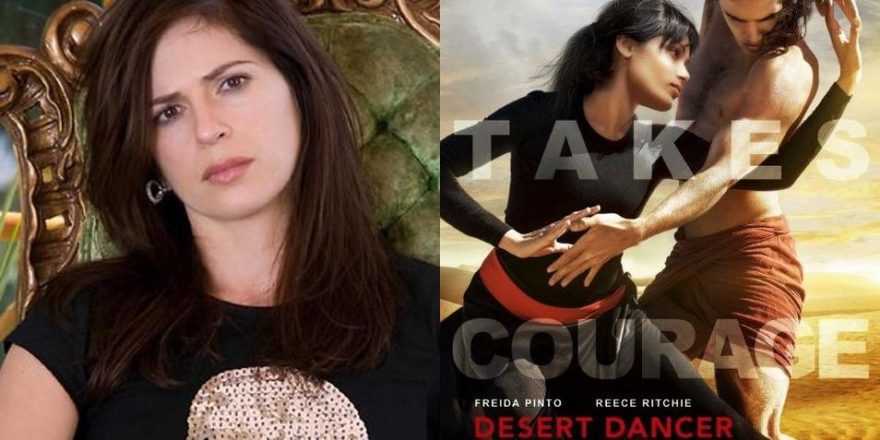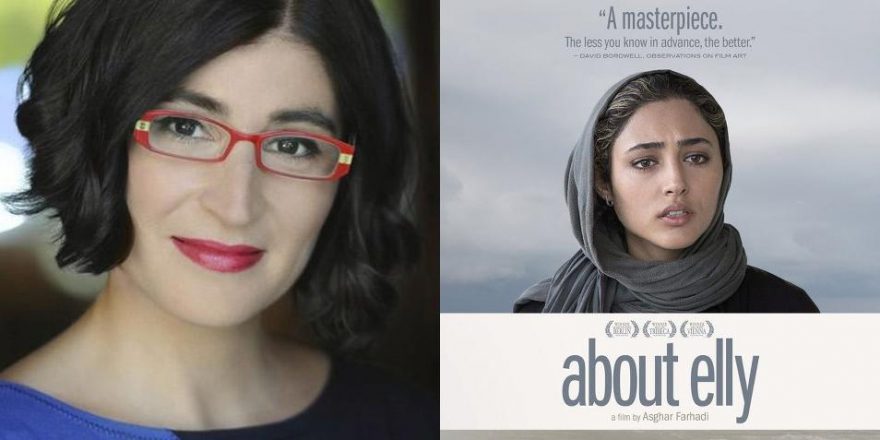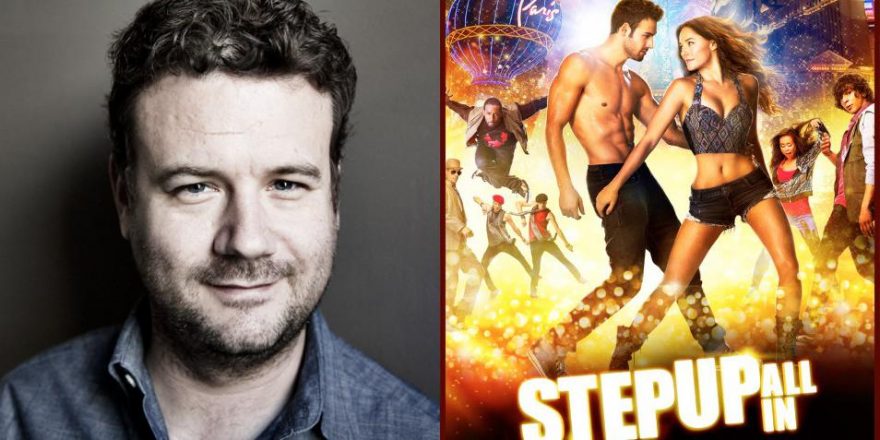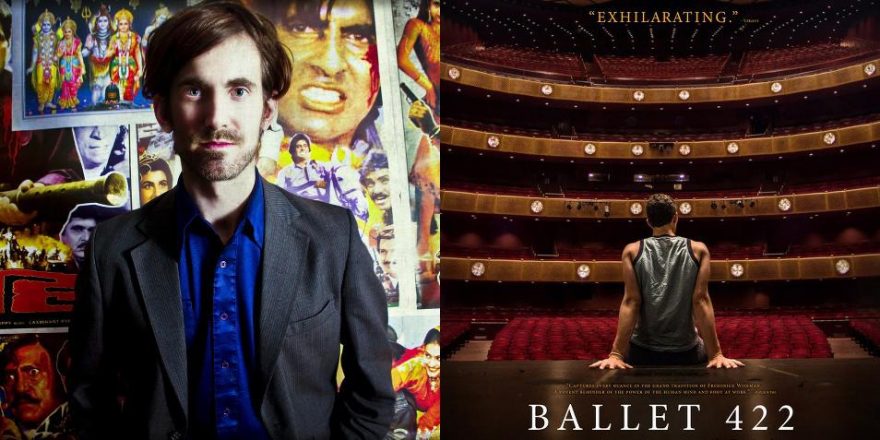When you live in America, it’s easy to think of Iran only as it is portrayed by both left- and right-wing media: America’s Foreign Policy Wildcard, the Middle East’s Bubbling Super-Volcano and the Everlasting Thorn in Israel’s Eye.
Even as someone with a Middle Eastern background (my father was born and raised in Ramallah, Palestine… which doesn’t make me Persian, but I’m claiming geographical kinship), I am not immune to buying into this stubborn narrative, which of course leaves out numerous Iranians and many layers of Iranian life.
Desert Dancer, the true story of professional dancer and Iranian defector Afshin Ghaffarian, reminds us from the first frame onwards that there is a common thread amongst human beings from all over the world, no matter what color our skin is, which social class we’re born into, or whether we’re living in a democracy or under an oppressive dictatorship: If you are born with a gift for the arts, it will come knocking on your soul until you answer, no matter how dangerous it is.
Ten-year-old Afshin Ghaffarian knows that dancing has been forbidden since the Islamic Revolution in 1979 — when Iran became the Islamic Republic of Iran — nevertheless, he trades in a minute-long dance-off in front of his class for a lashing that turns his entire hand purple and blue. For the record, that was the first scene that made me cry and it wasn’t the last. (I hate to add this disclaimer, but for those of you who consider crying to be a daily and hardly unusual occurrence for an XX chromosome species, let me set you straight: the last movie that made me cry was Hachi: A Dog’s Tale, which was released six years ago.)
With the support of his mother, Afshin (Reece Ritchie) finds a mentor in art teacher Medhi (Makram Khoury) and spends the next seven years practicing a mix of different (still legal) arts in the Saba Arts Academy, which suffers weekly attacks of vandalism from religious fundamentalists who’d prefer to ban even the last few legal art forms left in Iran. Secretly, Afshin also teaches himself to dance with the help of old footage that Medhi screens for him, as well as any online videos he can get his eyes on.
Then the movie jumps seven years ahead to the year 2009, when Afshin arrives at the University of Tehran. And as it goes with artists, it doesn’t take long for him to find a hive of like-minded friends, willing to break Islamic laws for the sake of art.
Ardavan (Tom Cullen), Mehran (Bamshad Abedi-Amin), Mona (Marama Corlett) and Elaheh (Freida Pinto) assist Afshin in creating an underground dance group, while introducing him to a world hidden from the Basij, Tehran’s morality police: dance clubs selling alcohol and drugs, underground art galleries, as well as uncensored Internet access via broken firewalls.
Director Richard Raymond smartly increases the tension once the movie’s location moves to Tehran, where there is more oppression but also more rebellion.This rang true to me for several reasons, one of which was my personal observation, as a teenager, of the Velvet Revolution and the fall of the Berlin Wall. (I should probably mention that the other half of my DNA is of a Germanic nature and thus I was born and raised approximately 600 kilometers from that famous wall, on its West side. Yes, this will mark the second time during this piece I am claiming geographical expertise.)
A propane tank can last for a long time if the pressure stays between 100 and 200 psi, but go over that for an extended amount of time and you will experience what firefighters refer to as BLEVE, Boiling Liquid Expanding Vapor Explosion. The human spirit is very similar to that propane tank — it will only tolerate so much oppression. During the Velvet Revolution, a BLEVE blew up one massive annoying wall and several other borders… but there are many examples in history where those explosions, well, backfire.
Desert Dancer is set against the Iranian Green Movement, in which people protested the fraudulent re-election of Mahmoud Ahmadinejad. Many would consider such an explosion of human spirit a brave demonstration, and not all Iranians would agree that it backfired, despite the high death toll, the mass arrests and the ultimate failure to revise the election.
Some of these events are portrayed as straightforward scenes, but the good stuff — the heartbeat of this movie, the moments I found myself sobbing uncontrollably — happens when all of the brutality, the oppression, the longing for freedom… is portrayed as dance.
Yearning to perform their secretly learned skills in front of an audience, Afshin and his dance group decide to put on a show in the desert, and audiences bus in from the city.
Anybody who watches that dance scene without having an emotional reaction has surely sold their soul to Faust. And it doesn’t matter that we didn’t get to see a Rocky-style training montage to show us how hard they worked to become this good. We believe them because deep down inside we know that the gift of art blooms under hardship. It’s those with easy lives and few scars who have little or nothing to bare. But you watch someone dance who has been beaten and terrorized their whole life for yearning to dance… that’s a performance no star student of any prestigious ballet school can match.
Eventually the same sandy stage that provides the backdrop for Afshin’s dance of triumph turns into his impending doom, forcing him to flee his motherland.
The brilliance of the desert scene is an added layer of tension, which would be difficult to describe without spoilers. But man, as if it wasn’t enough that this film turned me into a sobbing mess with its “Art as Resistance” storyline… it also tells a story of integrity and solidarity amongst friends. I have a thing for solidarity, it gets me every time and I think it’s a dying trend in real life. The world needs more people sticking up for others, not necessarily only for one individual, but for greater causes like freedom, justice and equality.
As a side note, and for those of you unfamiliar with my social media presence, I tend to get quite loud when it comes to Hollywood’s country club antics and exclusionism. Especially when filmmakers whitewash movies or cast randomly ethnic actors in the spirit of “brown is brown… so who cares?” Although Desert Dancer’s diverse ensemble cast is a rare sight, the filmmakers decided against casting Iranian actors in the lead roles. I’m going to bet this has something to do with foreign buyers wanting to get the most famous ethnic actors attached… if they already can’t have a much more bankable Caucasian cast. This is a vicious circle we have to break at some point, otherwise we will forever perpetuate the idea that white people and white stories are worth more than others, or in the case of Desert Dancer, disregard a nation’s specific culture and heritage and treat its citizens as if they are replaceable by anyone with a similar tan.
The actor in Desert Dancer who made the biggest impression on me was Iranian-born, British-based Bamshad Abedi-Amin, who delivered a subtle but powerful performance as Afshin’s friend Mehran. I dare say he could have easily pulled off the lead role as well, maybe with Nazanin Boniadi as his co-star, who was really wasted in the small role as Afshin’s mother.
There are so many other layers and aspects to this film that I’m not even hinting at. Mainly because I hate reviews that explain every relationship and major event in advance. But rest assured that it all unfolds into a well-told, rich and unique story, one which stuck with me for days after I saw it. As a matter of fact, I ended up discussing the film in my weekly inter-continental video call with my mother, who reminded me of a German saying which basically translates as “bad people don’t have music in their heart.”
But I reminded her that music was still allowed in Iran, it’s specifically dancing that’s forbidden, and that just never made sense to me. I mean, who forbids dancing? To which Mom suggested, “Maybe people who can’t dance?”
You have to admit, that’s a pretty good theory.
Back in the ’80s, we were all laughing about this, but maybe George Michael was ahead of his time, and much more profound than we thought, for singing, “Guilty feet have got no rhythm.”







